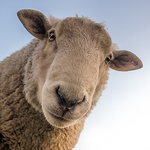Abstract
Two tracer tests were conducted between August 2004 and March 2007 at an ecological farm in western Bohemia. The first tracer test was performed for the summer–autumn grazing period (onset of arrested development), the second for spring (resumption of arrested development). In the first tracer test, the percentage of nematodes arresting development over the winter months reached 87.7% for Teladorsagia circumcincta, 66.7% for Haemonchus contortus, 89.9% for Nematodirus filicollis, 21.6% for Trichostrongylus axei, and 23.9% for both Trichostrongylus vitrinus and Trichostrongylus colubriformis. None of the arrested larvae were observed with species Cooperia curticei, Nematodirus battus, and Oesophagostomum venulosum. In the second tracer test, a significant increase of adult worms was discovered in March of species T. circumcincta and N. filicollis and Trichostrongylus spp. in February. Redundancy analysis and generalized linear models analyses have confirmed that environmental conditions play a crucial role in hypobiosis of sheep strongyles in the Czech Republic. The analysis of influences of various environmental factors revealed that the number of arrested larvae was negatively influenced by light—day length, sunshine, or daylight decrease (p < 0.01).
